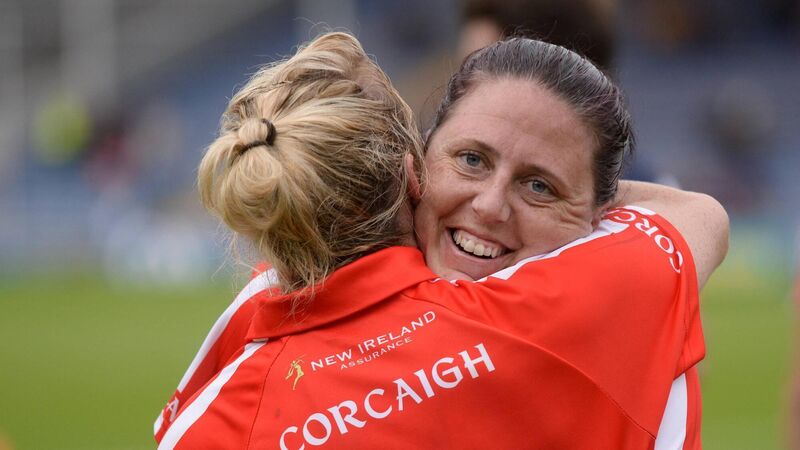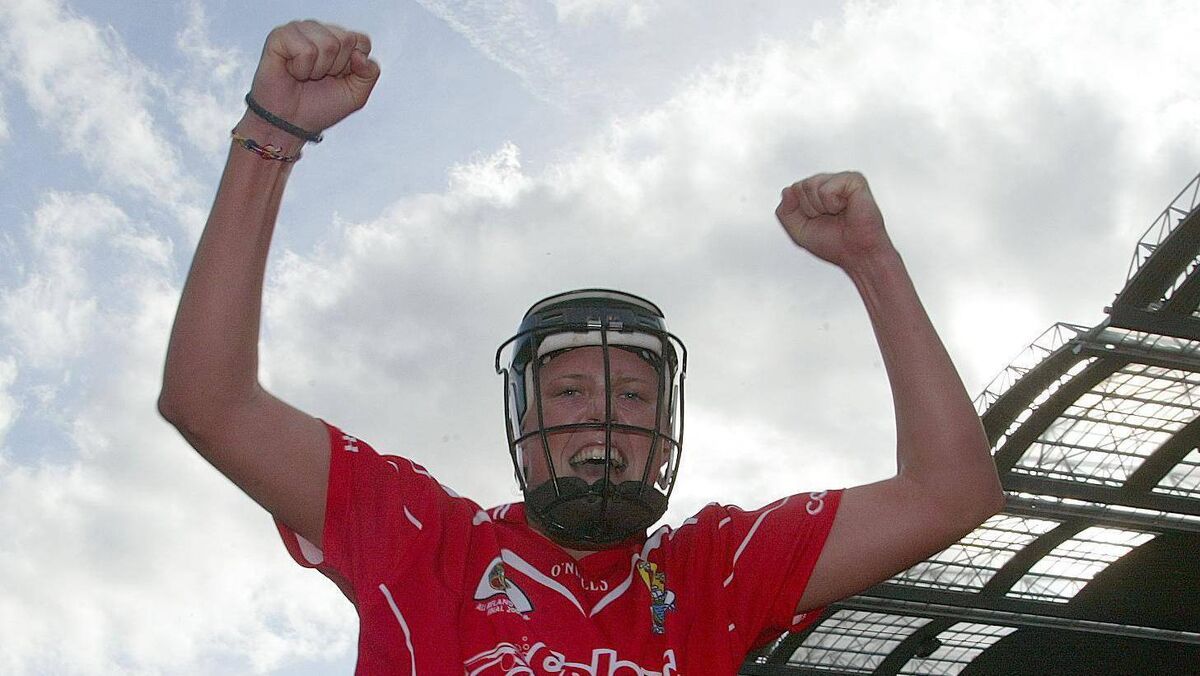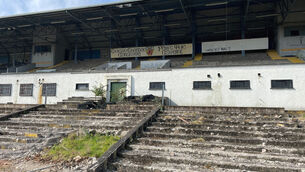Eimear Ryan: Gemma O’Connor’s ability to go off-script is part of what makes her one of the greats

Cork's Gemma O'Connor, behind, celebrates with Briege Corkery after the 2016 Liberty Insurance Senior Camogie Championship Semi-Final game between Cork and Wexford at Semple Stadium in Thurles, Co Tipperary. Photo by Piaras Ó Mídheach/Sportsfile
When I first encountered Gemma O’Connor, we were on opposing squads. It was the 2004 All-Ireland final — the camogie centenary, as it happened. She was lining out at number 9 for Cork; I was on the Tipp bench. Tipperary won handsomely by ten points that day, although Cork would beat Tipp on both subsequent occasions that we met in the final, in 2005 and 2006. More on that anon.
Over a decade later, we would wind up as clubmates when, after living in Cork city for a couple of years, I transferred from my club of origin, Moneygall, to the Barrs. The GAA is like that; it makes friends of enemies, enemies of friends. An ally on the county team might become a bitter club rival; your clubmate might break your heart in an Ashbourne match; your college teammate might mark you into oblivion in an intercounty game. The GAA feels infinite and epic to those who participate in it, but it’s also a small world. And I can confirm that it’s much better to be on the receiving end of a perfectly weighted Gemma O’Connor crossfield ball, than to be on the opposing team trying to figure out how to curb her influence.
Case in point: in 2005, O’Connor was central to Tipp’s heartbreak. Having started centre-forward, she and wing-back Briege Corkery moved to midfield at half-time, forming the engine that channelled the momentum of the game away from Tipp and towards Cork. From being behind by five points at the break, Cork came back to win by four, O’Connor chipping in with three vital scores.

It goes without saying that O’Connor’s intercounty career, all 19 years of it, is not lacking in such highlights. She played in — and won — her first All-Ireland in 2002 at the age of 17. Her most recent was in 2018, aged 33. She holds a record 11 All Stars. Perhaps even more extraordinarily, she has appeared in all but five of the last 19 All-Ireland camogie finals. With those kinds of numbers, her retirement from intercounty camogie is more than earned.
There have been tough years alongside the victories, but O’Connor’s All-Ireland final wins still outnumber her defeats nine to five. She’s the epitome of consistent excellence over time — or, as Evanne Ní Chuilin put it on Twitter, when picking her for a fantasy team of all-time greats: ‘Gemma O’Connor. Power, pace, courage, versatility, longevity, humility.’
I interviewed O’Connor last year for a book project, early in the first lockdown, and the slower pace and perspective of life in quarantine had made her philosophical. For the first time in years, she’d paused long enough to consider her lifestyle, and how frenetic life had become for her and for other intercounty players: working, training, travelling, rinse, repeat.
Cork’s exit in the previous year’s All-Ireland semi-final at the hands of Galway had also hit her hard, an experience she described as having the rug pulled out from under her. Cork had been buzzing on the back of their All-Ireland wins in 2017 and 2018, and a three-in-a-row looked within reach. It wasn’t to be. That said, O’Connor’s drive to play has never been about stats and milestones, like for example claiming a tenth All-Ireland medal. Her motivation has always been the challenge and the hunger.
That hunger ebbed only once in her career: after the death of her mother Geraldine in 2015, just weeks after Cork’s victory over Galway in the All-Ireland final. After the game, O’Connor gave an emotional interview in which she dedicated the win to her mother. It was one of the only matches she’d ever played that her mam hadn’t been able to attend. Geraldine, herself a camogie player and coach, was O’Connor’s closest and most important mentor, and for a time, camogie just didn’t feel right without her mother there to discuss and analyse and enjoy the games. By O’Connor’s admission, it wasn’t until 2017 that she began to really relish the sport again.
She would need to muster all her focus and single-mindedness that year, when she tore her MCL in the 2017 All-Ireland semi-final against Galway in Semple Stadium. She recalled holing up alone in a B&B in Limerick after the match, continually icing her knee, allowing herself a cry because she felt there was no way she’d be able to play in the final three weeks later. She spent the intervening time frantically rehabbing: icing, tiny movements, tentative runs. In a way she enjoyed it; she’d taken time off work to focus on her recovery and it was like being a full-time professional athlete.
Her goal was to be able to tog out for the final at least. Not only did she tog, she started at centre back — strapped up to the nines — and had an influential game, topped off by that iconic equaliser.
With the announcement of O’Connor’s retirement, it’s been nice to see The Point trending on Twitter again, a breathtaking score for its cool decisiveness as well as for its technical prowess. In the clip, Orla Cotter hits her a short hurley pass along the 65. In one smooth movement, O’Connor takes it and turns and strikes. No looking for options, no hesitation; just the knowledge that she could nail it. It looks almost zen.
Scoring points from the 65 doesn’t happen too often in camogie. Many players wouldn’t have the range, and even among those that do, it would be seen as slightly reckless to go for it — to risk a wide, or the ball dropping into the goalie’s hand. Much safer to let the ball in to the inside forwards, or to create an option for someone else. O’Connor’s ability to go off-script, to break with convention and do something unexpected, is part of what makes her one of the all-time greats. If I could add a few attributes to Evanne Ní Chuilin’s string of superlatives, it would be decision-making and leadership.
An extraordinary intercounty career has come to a close. And now — all bias aside! — long may her Barrs career flourish.








